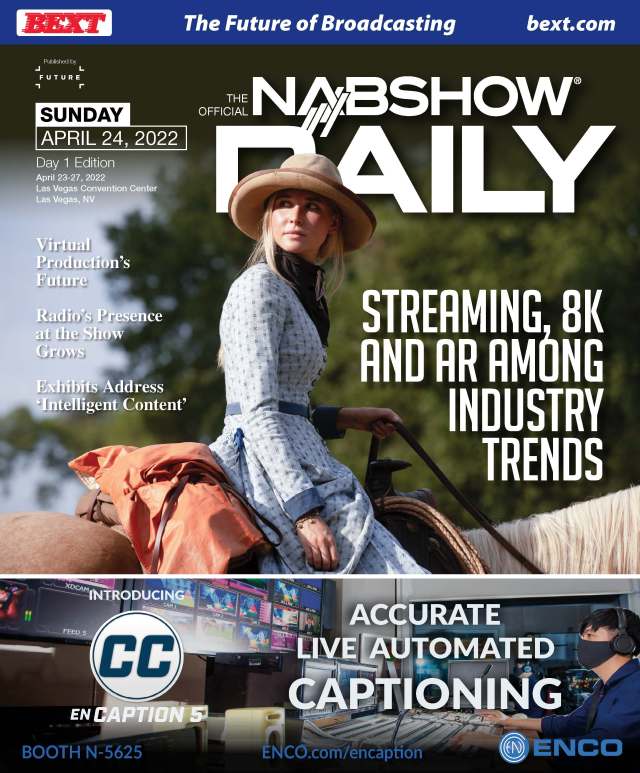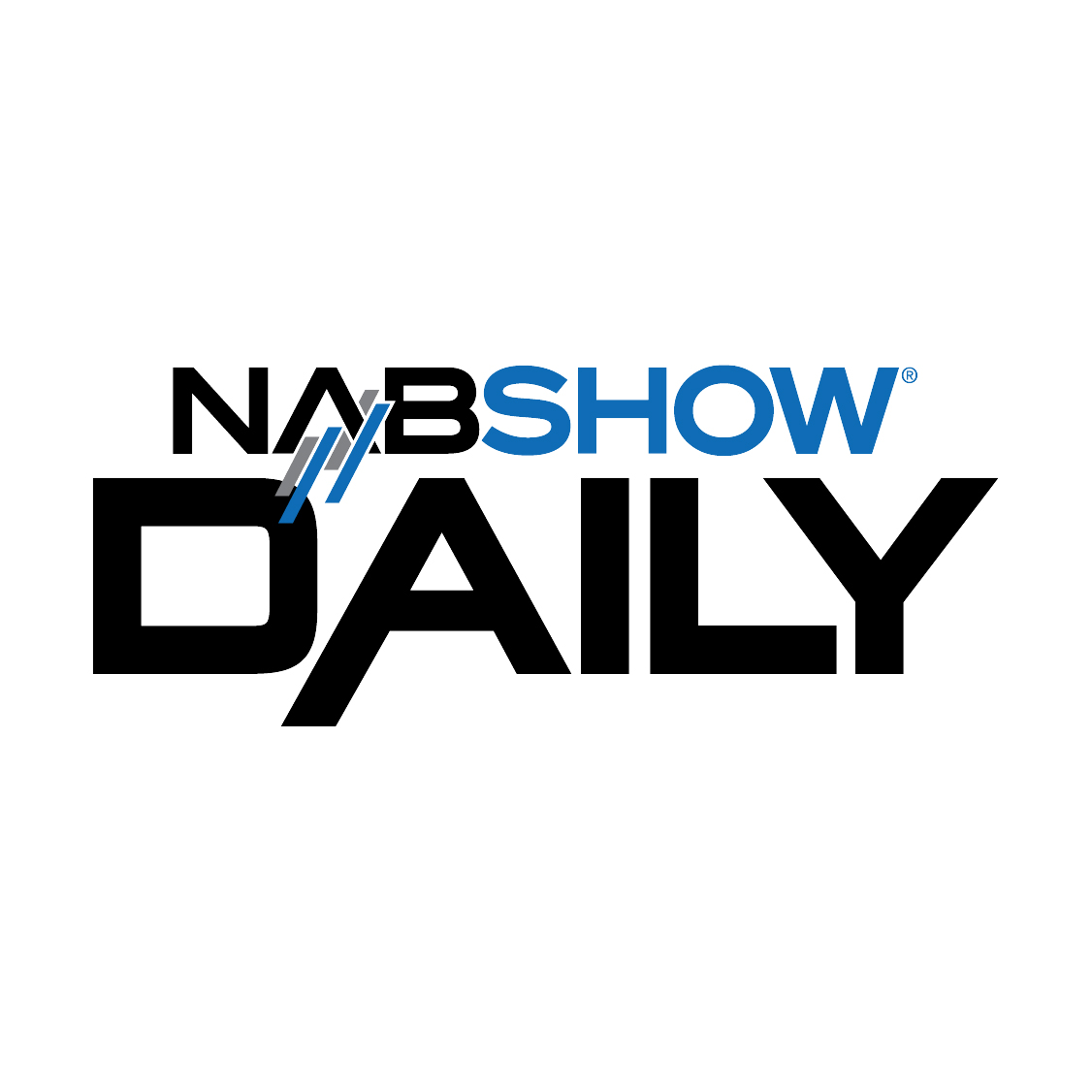
By Phil Kurz, TV Tech
AWS, MediaKind, Microsoft and Veritone are anchoring the space in the West Hall
Personalizing media isn’t a new concept, but the how and why behind reaching individuals or groups of media consumers sharing similar tastes with programs and commercials of interest is a relatively new development that’s changing quickly as artificial intelligence (AI) and machine-learning (ML) algorithms running in the cloud make greater inroads into content prep and distribution.
A new section of the show floor in the recently opened West Hall is being devoted to Intelligent Content and the tools that make it possible, including data-driven, personalized content, AI and ML, Web3, blockchain technology and even the Metaverse.
“The new category we are introducing is Intelligent Content, which is all about using data and advanced technology to drive unique and personalized content experiences,” said Chris Brown, NAB’s executive vice president and managing director of Global Connections and Events.
INTELLIGENCE AND METADATA
While the storage and processing required to deliver personalized content to audiences is readily available in the public cloud or private datacenters, it’s a variety of AI/ML-driven tools that enrich media metadata that in many instances are enabling media companies to up their personalization efforts and capitalize on the opportunities doing so presents.
“Media organizations have historically not been great at managing metadata or having centralized data repositories. The faster they can bring unification to their data estate and processes, the more intelligent their content will become,” said Simon Crownshaw, director of business strategy, media and entertainment at Microsoft, one of the core Intelligent Content exhibitors.
Noting the company has developed a “powerful and differentiated ecosystem” with the extended capabilities of its “global ISV network,” Crownshaw pointed to Microsoft’s continuing investment in cloud services to combine “just-in-time automation, machine learning and data insights” to enable M&E organizations to “bring intelligence into their content delivery.”
Veritone, another anchor exhibitor, is taking aim at leveraging AI in the cloud to improve the state of metadata. “Our biggest goal is to ensure we can not only generate valuable metadata through our cognitive processing, but then how we can effectively organize and display it to our users to simplify the process of accessing that media,” said Ben Howell, the company’s director of product management.

Leveraging AI algorithms to detect logos, recognize faces, transcribe dialog and read optical characters in the cloud upgrades the quality of metadata associated with video, and is the first step in enabling media companies as well as their customers and viewers to find content they desire thereby personalizing their searches, Howell said.
For media companies looking to monetize a content archive, this metadata enables consumers to make granular content searches. For those same companies, it also enhances internal workflows, making it fast and easy for creative talent to find desired content, he said.
“Optimized content search and discovery are important for personalization,” said Claire Southey, global tech leader of Media & Entertainment at Amazon Web Services (AWS), another anchor exhibitor in the new area. “By automatically converting audio and video assets into fully searchable archives for highlight generation, compliance monitoring, content consumption analysis and monetization, AWS services are helping make personalization more accessible for broadcasters.”

AWS tools such as Amazon Personalize, Amazon Rekognition and Amazon SageMaker generate content insights using a serverless application model. The company’s Transcribe tool can be added to applications and workflows to deliver speech-to-text transcription, she said.
CRAWL, WALK, RUN
Having come out of the digital world, free ad-supported television (FAST), ad-supported and subscription VOD services (AVOD and SVOD), social media and other digital media enterprises were ideally positioned from their outset to leverage AI and ML tools in the cloud to deliver personalized content experiences to the public.
“The digital world was born on a data-driven model,” said Baskar Subramanian, co-founder and CEO of Amagi. “It’s part of their DNA. Digital companies have always used analytics as the basis of their decision making.”

Long-established media companies are at various stages of adoption, however. Some have hit their stride and deployed their own over-the-top (OTT) FAST channels, AVOD streams and SVOD services that use AI- and ML-driven tools and analytics to make personalized content recommendations and target advertising.
“Traditional media organizations like Discovery, Fox and Disney are quite advanced in their cloud journey,” said AWS’s Southey. “We’re also seeing rapid adoption across the board, and further accelerated use in the sports broadcast sector.”
Others, such as local TV broadcasters and station groups, are at the beginning of their journey. “[Capturing data] is still a fairly new concept to them, and they’re slowly realizing its potential,” said Subramanian.
Tony Jones, principal technologist at MediaKind, another anchor exhibitor in the Intelligent Content area, agreed. “They definitely are playing catchup. SVOD services, those with content libraries going direct to consumers, and sports companies streaming games in an OTT environment with a lot of interactivity have set the benchmark for broadcasters. They’ve got to do something about it. It’s unsustainable to do otherwise.”

Tools like MediaKind’s PRISMA protocol, which enables manifest manipulation and targeting that connects an ad decision server and broadcast and IP delivery chains, may offer broadcasters a path forward as they look to deliver targeted ads and personalized content via NextGen TV with its support for internet connectivity available on smart TVs, Jones said.
Personalizing the experiences of audiences with media content, however, is about more than commerce. It’s about giving individuals what they want, said NAB’s Brown.
“The consumer continues to be king, demanding content that is not just entertaining but shaped to their interests; and, of course, they want it anytime and anywhere they happen to be. This is no easy expectation to meet, but there are new technologies promising exciting new developments,” Brown said.


